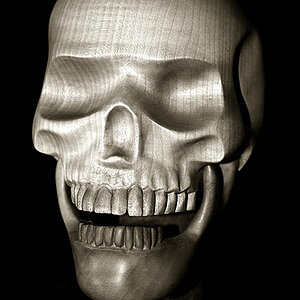chakalakasp
TPF Noob!
A rather quick and somewhat provocative article -- and one that I fully agree with. While one can certainly defensively hold a position that there is a line to be drawn where manipulation takes a photograph beyond truth, it's very difficult to maintain a position in which only images farted directly out of a camera qualify as "real" photographs.
The Myth of the Unmanipulated Image | BH Insights
I recently went to a talk put on by a Natty Geo photographer who went to great lengths to describe how he never digitally corrected any of his images (or cropped them), and how everything we saw on the screen was right out of the camera. His audience of mostly college students ate this crap up. As someone who used to work pre-press, it astounds me how uninformed some top-notch first-in-their-field photographers can be of how an image goes from their developed slide to a magazine spread or a digital projector screen or a digital image on their laptop screen. They get how a camera uses light to create an image on film or a sensor, but after that, they close their eyes and everything is Magic to them That Must Not Be Spoken About. Unless you are holding the undeveloped slide in your hand, the image has been processed. Scanning a slide or a neg requires further processing it by definition; how it is processed is up to the scanning technician and the scanning hardware/software. Getting images to look good even on good a Flexo press printing on heavy slick paper requires quite a bit of post processing -- it's just done by prepress folk, not photographers (who merrily go on their way thinking that their 'virgin' image remains unsullied).
The Myth of the Unmanipulated Image | BH Insights
I recently went to a talk put on by a Natty Geo photographer who went to great lengths to describe how he never digitally corrected any of his images (or cropped them), and how everything we saw on the screen was right out of the camera. His audience of mostly college students ate this crap up. As someone who used to work pre-press, it astounds me how uninformed some top-notch first-in-their-field photographers can be of how an image goes from their developed slide to a magazine spread or a digital projector screen or a digital image on their laptop screen. They get how a camera uses light to create an image on film or a sensor, but after that, they close their eyes and everything is Magic to them That Must Not Be Spoken About. Unless you are holding the undeveloped slide in your hand, the image has been processed. Scanning a slide or a neg requires further processing it by definition; how it is processed is up to the scanning technician and the scanning hardware/software. Getting images to look good even on good a Flexo press printing on heavy slick paper requires quite a bit of post processing -- it's just done by prepress folk, not photographers (who merrily go on their way thinking that their 'virgin' image remains unsullied).



![[No title]](/data/xfmg/thumbnail/37/37603-739c5d9b541a083a12f2f30e45ca2b7b.jpg?1619738147)




![[No title]](/data/xfmg/thumbnail/41/41937-bd46d08f9adcefe8bc65477f19a4f580.jpg?1619739947)



![[No title]](/data/xfmg/thumbnail/36/36677-3b91df53323d0850489794f28b3b9800.jpg?1619737677)
